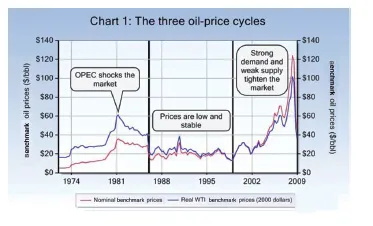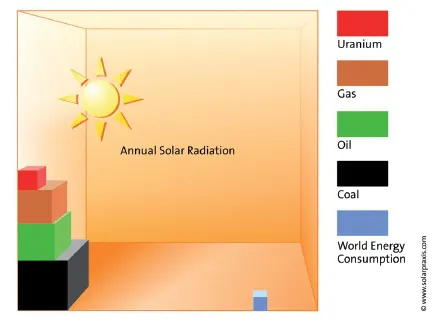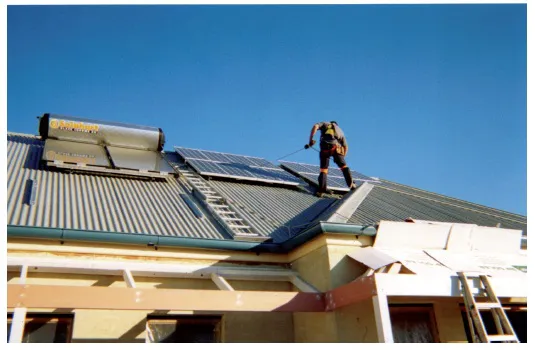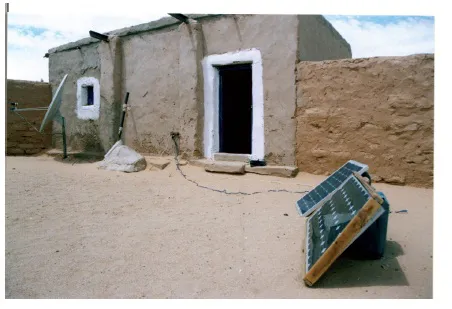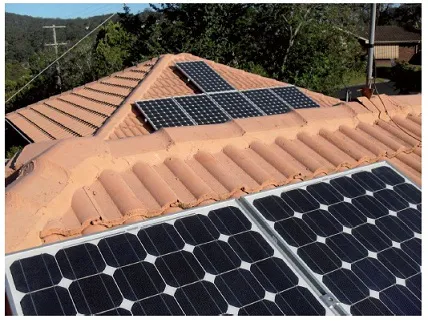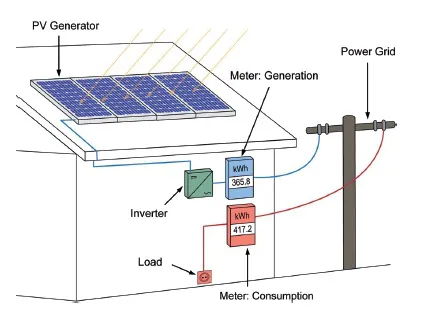![]()
1
Introduction to Solar Power
Almost every aspect of modern life is dependent on electricity. As technology improves, almost everything we use, from cooking and cleaning appliances to sports and entertainment equipment, has been updated to include electronic circuitry. However, society's dependence on electricity is increasingly problematic: as conventional fossil fuel reserves diminish and the danger of climate change materializes, the need for alternative energy sources is unprecedented. Solar power, that is electricity generated using energy from the sun, is an attractive way to offset our reliance on electricity generated by burning fossil fuels.
This book explores how solar energy is converted into electricity that can be used to power our homes and cities. It begins with a description of the solar resource, which is the sun's energy hitting the Earth's surface, and goes on to describe ways in which this resource can be quantified and captured by solar power systems. It explores different technologies used to convert sunlight into electricity and details how a grid-connected photovoltaic system is designed, installed and commissioned at the residential level.
Why solar power?
Since the industrial revolution, developed nations have been burning fossil fuels in ever increasing quantities. However, in the past decade two major problems with this have come to light. The first relates both to the scarcity of fossil fuel resources and the notion of energy security. The oil reserves that the world currently depends on are accepted as being a limited resource, and it is acknowledged that demand for oil will only increase as countries such as India and China increase their levels of industrialization and burgeoning middle classes demand more power. This growth will create an enormous demand on finite resources. Moreover, these resources are generally found in areas characterized by conflict, such as the Middle East, and prices can be highly variable. Interest in renewable energy technologies like solar power is driven by the need to meet these increasing needs and a desire for independence from ever increasing oil prices. The beauty of solar power is that it has very few running costs: once the capital investment has been made the energy is effectively free, while fossil fuels must be purchased continuously and all indications are that prices will continue to rise.
The second problem is that of human-induced climate change (also known as global warming), the widely accepted theory that burning fossil fuels releases greenhouse gases (GHGs) such as carbon dioxide and methane into the
Figure 1.1 The cost of crude oil has been increasing over the last 30 years and is expected to continue increasing indefinitely
Source: Chris Laughton, data from IEA
atmosphere, causing the planet's climate to change and alter weather patterns. Scientists predict more extreme weather events such as floods and droughts will occur as a result of climate change and that the average global temperature will rise. Naturally this affects the plants and animals that inhabit the Earth. Many species are predicted to suffer extinction if urgent action is not undertaken. Human-induced climate change has been acknowledged by all levels of government in developed and developing countries as needing urgent international action to mitigate its effects. This action will include measures to reduce the use of fossil fuels, so reducing the release of GHGs. A major contribution to the success of this action will be substituting fossil fuels with cleaner, low-emission technologies. Renewable energy technologies that make use of wind and solar power will therefore play an important role in reducing global GHG emissions and are likely to represent a large portion of the world's energy production in the future.
Figure 1.2 The Earth receives more than enough solar radiation each year to meet its current energy consumption 1000 timesno
Source: www.solarpraxis.com
What is a solar electric system?
Solar energy is harnessed by using solar electric systems, also known as photovoltaic (PV) systems. The word photovoltaic is derived from the Latin words photo (light) and voltaic (energy). PV devices capture the energy in sunlight and convert it into electricity — that is, they use light energy. Solar electric systems should not be confused with solar thermal systems which use the sun's energy to heat a substance (typically water). Electric and thermal systems are very different in appearance and operation, as Figure 1.3 shows. There are several different types of solar electric systems, discussed below. This book focuses on solar electric systems that feed electricity back into the grid (grid-connected solar electric systems).
Off-grid systems
An off-grid or stand-alone solar electric system is designed to replace or supplement conventional mains power supply. They are most commonly used in rural or remote areas where mains power is not available due to the high cost of grid extension. Off-grid systems use solar power to charge batteries that store the power until it is needed for use. The battery power is then used to operate appliances (e.g. lighting, pumps, refrigeration etc.) either directly from the batteries as low-voltage equipment (e.g. 12V DC lights) or from a power inverter, which is connected to the batteries and converts the battery voltage to mains equivalent for use in regular AC equipment (e.g. computer, television, radio etc.).
Off-grid systems can range in size from a single PV module, battery and controller to very expensive large systems incorporating sophisticated control equipment and large back-up generating sets. Further reading about off-grid systems can be found in Chapter 15.
Figure 1.3 An electrician installing a solar system that includes both a solar hot water system (left) and a solar electric system (right)
Source: Global Sustainable Energy Solutions
Figure 1.4 Layout of an off-grid system
Source: Global Sustainable Energy Solutions
Figure 1.5 Small off-grid solar electric systems are often the most convenient and cost- effective option for those living in rural areas of the developing world such as the West Sahara, where this system is located
Source: Global Sustainable Energy Solutions
Figure 1.6 Batteries in a stand-alone solar electric system
Source: Global Sustainable Energy Solutions
Grid-connected systems
Grid-connected or utility-interactive solar electric systems are the focus of this book. Unlike off-grid systems they are not designed to be a substitute for grid power. Grid-connected systems are normally found in urban areas that have readily available mains supply and instead of storing the electricity generated by the PV system in batteries, the power is fed back into the grid. In this way the grid acts as a kind of storage medium and when power is needed in the building it can be imported from the grid. One of the key benefits of this is that the system does not have to supply enough electricity to cover the property's power demand as in an off-grid system. The property can be powered by the PV system, the electricity grid or a combination of the two, meaning that the system can be as small or large as the owner desires. Excess power generated by the PV system will be exported to the power grid and in many areas the system owner is paid for the exported power.
The major components of a grid-connected PV system include the PV array, inverter and the metering system. In addition to these major components are the necessary cables, combiner boxes, protection devices, switches, lightning protection and signage.
Figure 1.7 Grid-connected PV systems are becoming more common in urban areas
Source: Green Solar Group
Figure 1.8 Typical small grid- connected PV system (as set up for gross metering). A grid-connected PV system uses the sunlight that strikes the PV array to generate DC power. This DC power is converted to AC power via the inverter and the AC power is supplied (or fed) into the electricity grid via the meter
Source: Global Sustainable Energy Solutions
Central grid-connected PV systems
The existing electricity system typically consists of central power stations using a variety of fuel sources such as coal, gas, water (hydro) or diesel that provide power to end-users via transmission lines and a distribution system. The power stations directly connect to the transmission lines and the power produced by the power stations is consumed by end-users at their actual location in factories, businesses and homes.
A central grid-connected PV system operates in the same way. A large PV array is directly connected to the transmission lines. Grid-connected central PV systems can be as sm...

